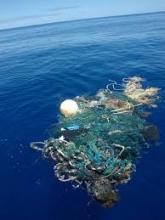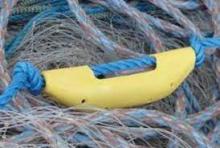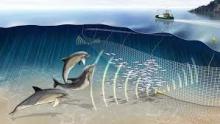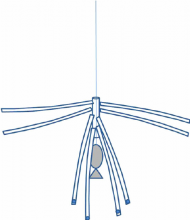Backdown procedure and Medina panel
Small cetaceans may become trapped when purse seiners fish on free-swimming schools of tunas. The backdown procedure and Medina panel are used in combination with skiffs and rafts to create an escape route and shepherd the cetaceans to safety.



